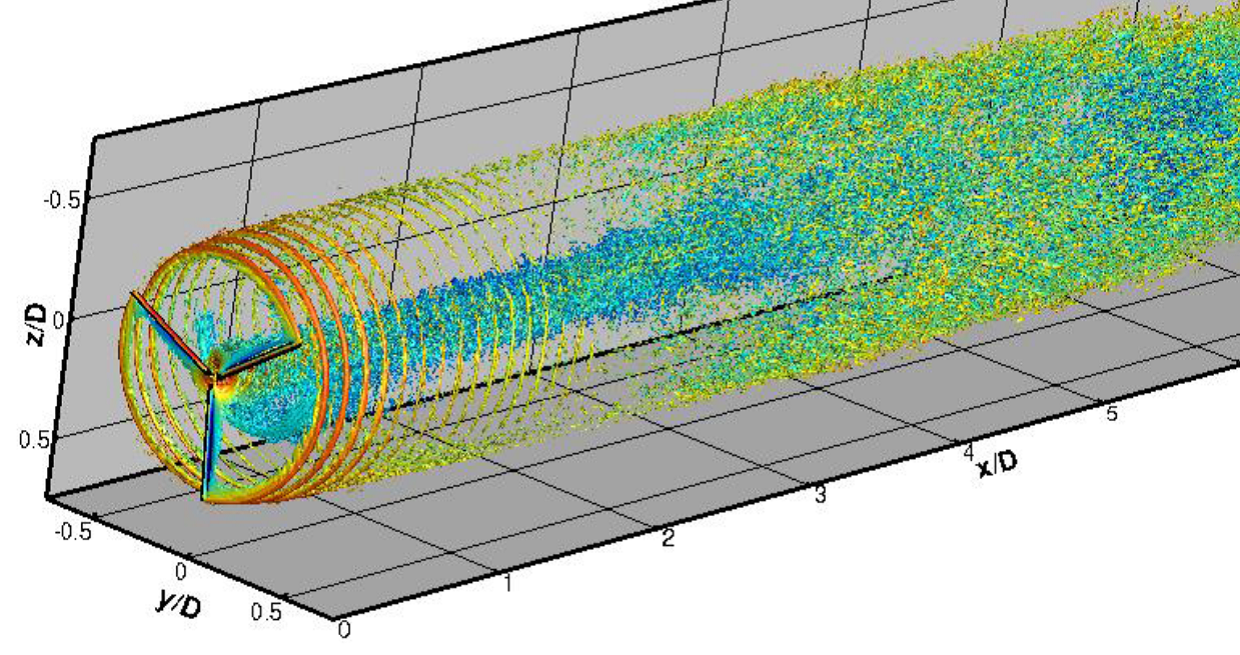One of the primary roles of Sandia’s Scaled Wind Farm Technology (SWiFT) test site will be to conduct detailed experiments on turbine wakes and investigate how those wakes interact with nearby turbines. Although the SWiFT turbines are somewhat smaller than MW-scale turbines deployed today, Sandia would like the SWiFT turbines, and their wakes, to behave in a similar manner to those of larger machines. To that end, research rotors are being designed to mimic the blade loading of larger turbines, and Sandia is partnering with researchers at U. of Minnesota a Saint Anthong Falls Lab to use high-fidelity computational fluid dynamics (CFD) models to aid in that effort.
An open question is how the details of the blade loading affect the development and breakdown of the wake behind the rotor. To answer this question, U. of Minnesota, under the direction of Professor Fotis Sotiropoulos, is running simulations of SWiFT turbine wakes using their Virtual Wind Simulator (VWiS) code. This code is a high-fidelity large eddy simulation code that requires significant computational resources to run. It is being run on Sandia’s Red Sky and Red Mesa supercomputers, two institutional computing clusters available for energy-related research. An example of a VWiS simulation of the SWiFT rotor wake is shown in the illustration above. Simulation results will be used to understand the physical mechanisms of near-wake development, and to identify how changes in rotor design impact behavior of the wake. Additional simulations of the entire three-turbine SWiFT site are also underway; the results of these simulations will be used to help establish the expected power performance and loads profile of the SWiFT site under various atmospheric conditions.
Sandia National Lab
sandia.gov
Matt Barone, (505) 284-8686.
Filed Under: Blades, News, Turbines





